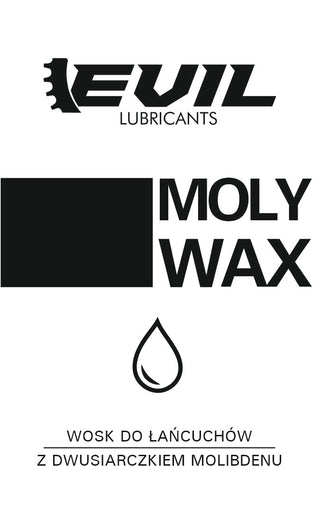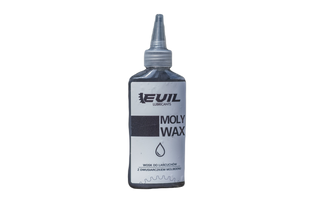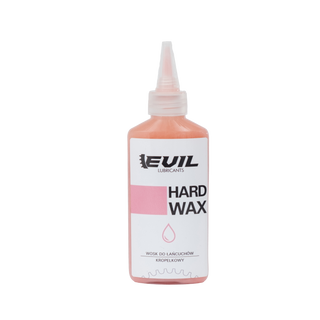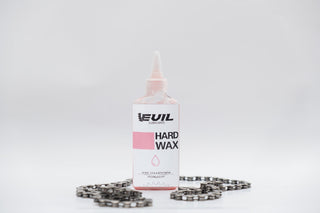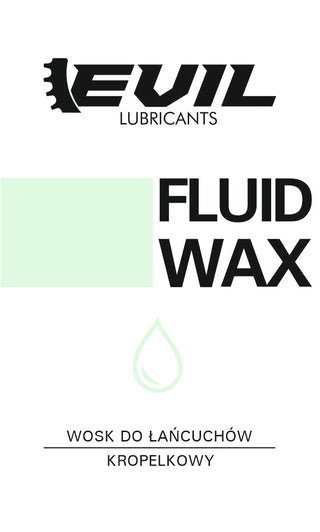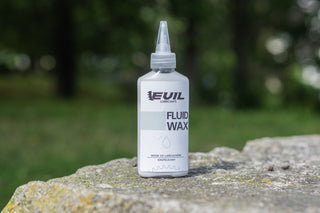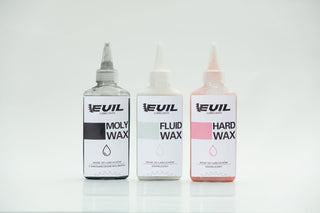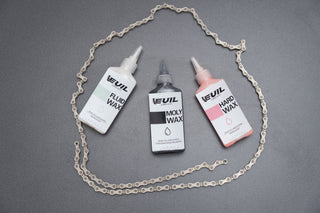Bicycle lubricants
Sort + Filter
Chain waxing or oiling?
Chain waxing is the process of applying wax to a chain to increase its durability and performance. It is a popular method of lubricating chains on bicycles, motorcycles, and other vehicles that have a chain drive.
Chain waxing is considered a more advanced lubrication method compared to the traditional use of oils and fats. Wax is a more effective lubricant that provides better protection for the chain against wear, corrosion and abrasion.
Waxing your chain has many benefits, including:
- Longer Chain Life Chain waxing can significantly extend the life of your chain by providing it with adequate protection against wear and corrosion. Wax also has a low coefficient of friction, which reduces resistance to movement and chain wear.
- A cleaner drivetrain Waxing your chain leaves less dirt and grime on your chain compared to oiling it. Wax tends to “repel” dirt, meaning dirt and dust don’t stick to the chain’s surface as easily. This can significantly increase the life of your chain and other drivetrain parts.
- Less maintenance Waxing your chain requires less maintenance than oiling. Wax usually stays on the chain longer than oil, which means you don’t have to apply it as often. Plus, waxing your chain doesn’t leave any greasy marks on your bike or motorcycle, which is always a good thing.
- Better weather resistance Chain waxing is more resistant to weather conditions such as rain, snow, dust and sand. The wax is water-resistant and provides additional protection against corrosion and rust.
How to wax a chain?
Waxing your chain requires some skill and preparation. Here are a few steps you should take to ensure that your chain waxing is effective:
Clean the chain Before applying wax to the chain, it should be thoroughly cleaned of dirt, impurities and other
Types of chain waxes
What kind of chain wax? There are many types of waxes on the market that can be used to wax a bike chain. The choice of wax depends on your preferences and conditions of use. Here are some popular types of waxes that are used to wax a bike chain:
- PTFE Wax (Polytetrafluoroethylene) - is a wax containing PTFE particles that increase wear resistance and reduce friction. PTFE wax is effective in dry and adverse conditions, such as dust and sand.
- Ceramic wax - this is a wax containing fine ceramic particles that increase the durability of the chain and reduce friction. Ceramic wax is effective in extreme conditions, such as rain and mud.
- Wax with the addition of PTFE and ceramic - this is a wax that combines the advantages of PTFE and ceramic waxes. Thanks to this wax, the chain is more resistant to wear and corrosion, and friction is minimized.
- Natural wax - this is a wax that is made from natural ingredients, such as bees or plants. Natural wax is environmentally safe and easy to apply.
The best type of bike chain wax depends on user preference and usage conditions. For most cyclists, PTFE or ceramic waxes are good choices, as they provide good protection against wear and corrosion. However, if you ride in very wet conditions, copper wax may be more effective.
Hard or soft wax?
The choice between hard or soft wax for waxing a bicycle chain depends on user preference and riding conditions.
- Hard wax is more durable and provides longer protection against chain wear. It is also more weather resistant and more difficult to wash off. Hard wax is usually used in environments with extreme conditions, such as rain and mud.
- Soft wax is easier to apply and more flexible, allowing it to better penetrate the chain crevices. However, compared to hard wax, soft wax is not as durable and must be applied more often. Soft wax is a good choice for use in dry conditions.
Ultimately, the decision between hard and soft wax comes down to preference and riding conditions. If you ride in severe weather or muddy conditions, hard wax will be more appropriate. On the other hand, if you ride in dry conditions, soft wax may be a better choice. In either case, it is important to properly prepare the chain before applying wax and to clean and lubricate it regularly to ensure its durability and performance.
Chain wax color
The color of a bike chain wax is not usually a deciding factor in choosing a product, but it may be important to some users for aesthetic or functional reasons.
When it comes to functionality, the color of the wax can affect the visibility and ease of cleaning your chain. Light colored waxes, such as white or light yellow, can help you see dirt and dust, making them easier to remove when cleaning your chain. On the other hand, dark colored waxes, such as black or dark gray, can help hide traces of dirt and dust, which is especially useful for people who don’t like cleaning their chain after every ride.
However, in most cases, the color of the bike chain wax is chosen based on user preference. Most manufacturers offer waxes in a variety of colors, such as white, black, red, green, yellow, etc., allowing you to match the color of the wax to the color of your bike or your personal preferences.
It is worth noting, however, that the color of the wax should not be the only criterion for selection. Other factors, such as wax quality, composition, durability, ease of application and price, are more important.
Ultimately, the choice of bike chain wax color comes down to user preference. However, regardless of the color, it is important to choose a high-quality wax that will provide adequate chain protection and improve its performance
Wax or lubrication oil chain ?
The question of choosing between wax and oil for lubricating a bicycle chain is one of the most frequently discussed topics among cycling enthusiasts. Both wax and oil have their advantages and disadvantages, and the choice between them depends on individual preferences and the conditions of use of the bike.
Oil is one of the most popular methods of lubricating a bike chain. Compared to wax, oil is easier to apply, absorbs faster, and is also easier to remove during cleaning. Oil can also provide more lasting protection against corrosion, especially in wet conditions. However, oil also has its drawbacks, such as collecting dirt and dust, which can transfer to other parts of the bike and require more frequent cleaning of the chain. In addition, oil can be less effective than wax, meaning it requires more frequent applications.
Wax, on the other hand, has many advantages that attract bike users. Wax is more durable than oil and does not collect as much dirt and dust, which means the chain stays cleaner and requires less cleaning. In addition, wax does not require as frequent applications as oil, which means it can be used less often. Wax is also more environmentally friendly than oil, as it contains fewer toxic substances and breaks down more easily.
However, wax also has its drawbacks. It is more complicated and time-consuming to apply than oil, and wax may not perform as well in humid conditions. Wax can also be less efficient than oil, meaning it requires more frequent applications.
Ultimately, the choice between wax and oil comes down to personal preference and the conditions in which the bike is used. For riders who prefer minimal maintenance and ease of application, oil may be the better choice. For those who care about chain cleanliness and performance, wax may be the better choice.
However, regardless of your choice, it is important to use high-quality products that will provide adequate protection and performance for your chain. When it comes to oil, it is worth choosing a bicycle oil that has been specifically designed to lubricate a bicycle or motorcycle chain.

